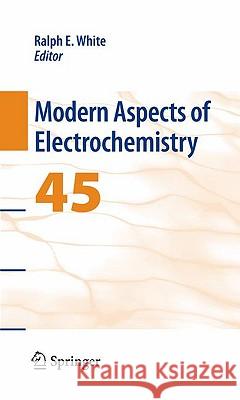Modern Aspects of Electrochemistry 45 » książka
Modern Aspects of Electrochemistry 45
ISBN-13: 9781441906540 / Angielski / Twarda / 2009 / 340 str.
Modern Aspects of Electrochemistry 45
ISBN-13: 9781441906540 / Angielski / Twarda / 2009 / 340 str.
(netto: 573,71 VAT: 5%)
Najniższa cena z 30 dni: 578,30
ok. 22 dni roboczych
Dostawa w 2026 r.
Darmowa dostawa!
This volume contains ?ve chapters. The topics covered are the cathodic reduction of nitrate, for which the key issues are pr- uct selectivity and current ef?ciency; a discussion of ionic l- uids known as molten or fused salts in key industrial processes; the properties of nanowires made of metals and semiconductors by means of electrodeposition into porous templates and template synthesis; and an overview of a range of alloys used in elect- plating, and trends in ammonium electrolysis. Also, included is a review of the applications of synchroton x-ray scattering to the electrochemical interphase. Chapter 1 by Celia Milhano and Derek Pletcher reviews the cathodic reduction of nitrate as a "truly fascinating reaction" since processes for nitrate removal from drinking water and effluents and reducing nitrates in nuclear waste is an essential step in n- lear waste disposal. The authors also review electrochemical membrane technology not involving the cathodic reduction of - trate. In Chapter 2, the authors discuss substances called ionic l- uids, and the fact that this is really a new more modern term for molten or fused salts. However, the label of ionic liquids is usu- ly applied to the liquid state of salts at or near room temperature, which is a way to differentiate low-melting salts from higher me- ing cousins. These molten or fused salts form the basis of several key industrial processes, and this chapter is primarily devoted to the non-haloaluminate ionic liquids as reviewed by Tetsuya Tsuda and Charles L. Hussey.











